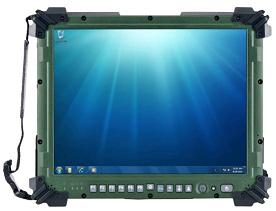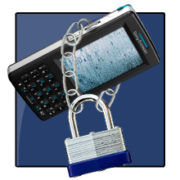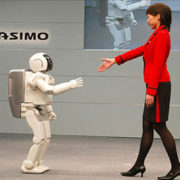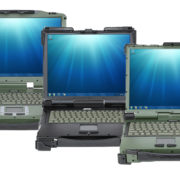 Are keyboards dead? In view of their ubiquity, and proven usefulness, this may seem to be an absurd question, but some people are considering this possibility. The success of the keyboard-less iPad in penetrating the business market was one of 2011’s big surprises. Also, in an interview in the IEEE Spectrum, journalist Sally Wiener-Grotta noted the impressive number of stylus interfaces on display at the recent Consumer Electronics Show (CES). She even cites studies that claim that when we use handwriting input, “… we absorb information better and we express information better…” Read more
Are keyboards dead? In view of their ubiquity, and proven usefulness, this may seem to be an absurd question, but some people are considering this possibility. The success of the keyboard-less iPad in penetrating the business market was one of 2011’s big surprises. Also, in an interview in the IEEE Spectrum, journalist Sally Wiener-Grotta noted the impressive number of stylus interfaces on display at the recent Consumer Electronics Show (CES). She even cites studies that claim that when we use handwriting input, “… we absorb information better and we express information better…” Read more
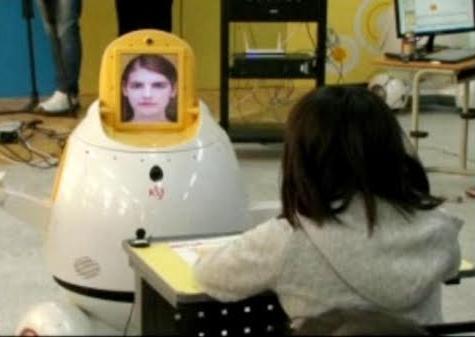 Update: This telepresence article inspired more than a few comments in LinkedIn discussion groups. With the authors’ permission, we are reposting comments made by Tandy Trower of Hoaloha Robotics, and Jim Gunderson of Gamma Two Robots.
Update: This telepresence article inspired more than a few comments in LinkedIn discussion groups. With the authors’ permission, we are reposting comments made by Tandy Trower of Hoaloha Robotics, and Jim Gunderson of Gamma Two Robots.
“For certain types of scenarios, telepresence is very useful. For example, it has enabled us to explore the surface of Mars, inspect the nuclear reactor buildings in Japan, and enable soldiers to remotely defuse bombs. However, for business and personal/consumer scenarios it is much less clear if the value proposition works. Read more
 Here we are, well into the second decade of a new millennium, and not only is there a conspicuous absence of jet packs, but also no robot butler made my breakfast this morning. Domestic robots are not completely unknown, of course. There’s the famous vacuuming Roomba, and home-based medical robots are starting to appear. Yet, while robots are ubiquitous in industry, and rapidly expanding in the military sphere, their presence in our homes is minimal. Read more
Here we are, well into the second decade of a new millennium, and not only is there a conspicuous absence of jet packs, but also no robot butler made my breakfast this morning. Domestic robots are not completely unknown, of course. There’s the famous vacuuming Roomba, and home-based medical robots are starting to appear. Yet, while robots are ubiquitous in industry, and rapidly expanding in the military sphere, their presence in our homes is minimal. Read more
 2011 was a good year for AMREL and 2012 promises even to be better. We have all kinds of exciting news and we can’t want to wait to tell you about it. Come to think of it, we have to; this is the last blog post of the year. In the meantime, you and your loved ones have a happy and safe holiday! See you in 2012!
2011 was a good year for AMREL and 2012 promises even to be better. We have all kinds of exciting news and we can’t want to wait to tell you about it. Come to think of it, we have to; this is the last blog post of the year. In the meantime, you and your loved ones have a happy and safe holiday! See you in 2012!
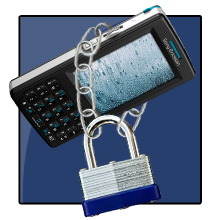 As reported previously in this blog, the 2nd Network Integration Evaluation (NIE) appears to have successfully tested ARMY’s communication systems. Not all the results were reassuring. For example, there was some nasty feedback about the Nett Warrior. Most surprising was that many warfighters claimed that they didn’t want or need a smartphone. The ARMY’s smartphone program is threatened by other dangers as well. As noted in Wired, the smartphone could be a casualty of proposed Defense cuts. However, one of the most serious problems is the one that was identified in the earliest days of the program: security.
As reported previously in this blog, the 2nd Network Integration Evaluation (NIE) appears to have successfully tested ARMY’s communication systems. Not all the results were reassuring. For example, there was some nasty feedback about the Nett Warrior. Most surprising was that many warfighters claimed that they didn’t want or need a smartphone. The ARMY’s smartphone program is threatened by other dangers as well. As noted in Wired, the smartphone could be a casualty of proposed Defense cuts. However, one of the most serious problems is the one that was identified in the earliest days of the program: security.
I haven’t heard too much about it from the ARMY recently, but some recent news items have raised the prominence of this issue: Read more
December Update If you are not reading The Robot Report (and you should be; it’s one of the best things on the web about the robotic industry), you may have missed their article about the Fukushima Daiichi disaster. Much of what it says will not be news to the readers of this blog, but one paragraph caught my attention:
“In the case of Fukushima, both iRobot and QinetiQ, companies that volunteered equipment to Tepco, instructors found that senior Tepco employees were chosen to be trained to operate the American and British robots yet they were less suited to the task than the 20-year olds who had gamer experience. The remote-controlled PackBot and Talon robots and the RC Bobcat tractors, all used gaming consoles to operate their devices and the senior employees were slow to learn. In a recent Webinar on the issue by Robotic Trends, the trainers found that 20-year olds learned in less than a day while it took the older Tepco employees many days to gain the same level of competence.”
With the recent rapid growth of unmanned systems, there has been much speculation about the disruptive effects of their wide-spread adoption. A commonly-held view is that low-skilled workers will be displaced, while an educated elite (presumably people who make robots) will continue to thrive. Read more
 The Army has just finished its second Network Integration Evaluation (NIE). This large exercise appears to have accomplished its primary goals of accelerating the notoriously slow acquisition process, field-testing entire networks, and gathering valuable end-user feedback. Sometime massive bureaucratic efforts do work.
The Army has just finished its second Network Integration Evaluation (NIE). This large exercise appears to have accomplished its primary goals of accelerating the notoriously slow acquisition process, field-testing entire networks, and gathering valuable end-user feedback. Sometime massive bureaucratic efforts do work.
Although complete tactical communication systems were tested, the smartphones were the center of attention. Some results are already filtering out. Read more
 Faster, more powerful, and more flexible than earlier models, AMREL’s new RT9, RK9, and RF9 laptops are perfect for the data-heavy applications used by the military and public safety sectors.
Faster, more powerful, and more flexible than earlier models, AMREL’s new RT9, RK9, and RF9 laptops are perfect for the data-heavy applications used by the military and public safety sectors.
“Every single upgrade in the new laptops was made in response to the critical needs of end users,” explains Ron McMahan, AMREL’s VP, Engineering Solutions. “Video streaming, biometric file transmission, mapping software, and other large footprint applications need greater shared system memory. So, AMREL has added options for up to 8GB memory as well as faster processors and a larger memory cache.” Read more
 Should robots walk or roll? While the answer to this question is obvious for certain applications, it has implications for the entire robot industry, and society as a whole.
Should robots walk or roll? While the answer to this question is obvious for certain applications, it has implications for the entire robot industry, and society as a whole.
Colin Angle, CEO of iRobot, has seen the future of robots, and they aren’t walking. In an interview with Pilots Presence (reprinted in IEEE Spectrum), Angle criticized the millions of dollars spent on developing bipedal robots. These systems often require large groups of support personnel during operation, and have a Mean Time To Failure of 45 minutes. Angle compares these delicate, slow-moving, humanoid systems to the robust iRobot Warrior UGV, which uses treads. Watch this video of the Warrior 710 running rampant over rocks and up stairs, and you will understand his preference for non-legged robots. Wheeled/treaded robots are cheaper, simpler, and more rugged. Read more
American Reliance, Inc.
789 N Fair Oaks Ave,
Pasadena, CA 91103
Office Hours
Monday-Friday:
8:00 am – 5:00 pm PST
Saturday: Closed
Sunday: Closed
Main: +1 (626) 482-1862
Fax: +1 (626) 226-5716
Email: AskUs@amrel.com
Blog Posts
Mobile Biometric Solutions
Mobile Biometric Smartphones & Tablets
BioFlex S® Commercial Smartphones
BioSense AT80B | 8″ Android Biometric Tablet
BioSense PA5 | 10.1″ (Gen 2) Android Biometric Tablet
BioSense PA5 | 10.1″ Android Biometric Tablet
BIOPTIX PM3B | 7″ Windows Biometric Tablet
BIOPTIX PM5B | 10.1″ Windows Biometric Atom Tablet


